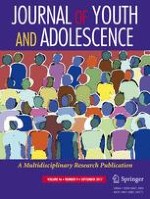22-05-2017 | Empirical Research
Examining the Contemporaneous, Short-Term, and Long-Term Effects of Secondary Exposure to Violence on Adolescent Substance Use
Gepubliceerd in: Journal of Youth and Adolescence | Uitgave 9/2017
Log in om toegang te krijgenAbstract
The relationship between secondary exposure to violence—defined as witnessing violence in the home, community, or school—and adolescent substance use is well-documented. Yet, multi-wave empirical studies examining this relationship are sparse. In addition, studies have only begun to examine whether this relationship varies by the situational components of the violent event. Using data from the Project on Human Development in Chicago Neighborhoods (PHDCN), this study examines the contemporaneous, short-term, and long-term effects of secondary exposure to violence on substance use, and whether witnessing violence in which a weapon is present has a different impact on adolescent substance use than does witnessing violence without a weapon. Hierarchical logistic regression models on a racially and ethnically diverse sample of 1670 youth (51.5% female) residing in 79 neighborhoods indicated that: (1) the effects of secondary exposure to violence on alcohol and marijuana use were enduring, albeit attenuated, over time; (2) the effect of secondary exposure to violence on illicit drug use was suppressed in the short-term but significant in the long-term; (3) witnessing violence without a weapon was salient for alcohol and marijuana use at all time points; and (4) witnessing violence with a weapon impacted illicit drug use in the long-term. The results suggest that addressing the consequences of secondary exposure to violence requires prolonged intervention efforts and that the study of secondary exposure to violence requires a more nuanced approach that accounts for situational aspects of the violent event.
